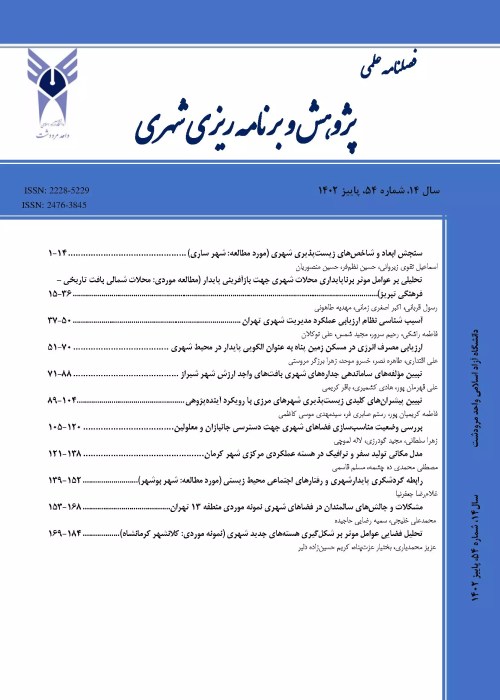Review of the spatial and physical evolution of health uses with emphasis on baths in Islamic cities of Iran from Safavieh to Qajar (Case study: Ardabil city)
Islamic architecture has valuable principles and concepts that have been used in the buildings of the Islamic and Iranian periods. One of these buildings is the bathrooms (sanitary spaces). Public baths during the Islamic era, including important elements in the formation and expansion of neighborhoods and a symbol of the development of cities and villages and the economic power and social base of the founders, as well as their position have had a different breadth and breadth. The religious and historical city of Ardabil has a long history with valuable historical baths that the principles of Islamic architecture have been reflected in its design. Therefore, the purpose of this study is to investigate the spatial and physical evolution of the bath in Islamic architecture of Iran from Safavieh to Qajar in Ardabil. The research method in this article is historical-analytical and the method of data collection is library (historical texts, documents, reports, written works, etc.) and field. The results of this study showed that changes in the body and space of historic baths have been influenced by various factors; including economic factors, government factors, aesthetic factors, geographical and environmental conditions, etc. For example, in the baths of the Safavieh era, the construction of the vestibule and its importance was not common, but over time and during the Qajar period, the construction of the vestibule was common, which has caused changes in the architecture of the baths. Also, the area of baths in the Safavieh period was more than the Qajar period, so that Ibrahimabad bath with an area (105,126 square meters) is the largest bath in the Safavieh era and later periods. Architecture and decorations in baths flourished during the Safavieh period; this is evident in the baths of Aghanaghi and Ebrahimabad. In the city of Ardabil (especially during the Qajar period) public baths this important functional space in society has been not only a place for bathing, but also a place for the continuation of economic, cultural and social relations.
- حق عضویت دریافتی صرف حمایت از نشریات عضو و نگهداری، تکمیل و توسعه مگیران میشود.
- پرداخت حق اشتراک و دانلود مقالات اجازه بازنشر آن در سایر رسانههای چاپی و دیجیتال را به کاربر نمیدهد.


